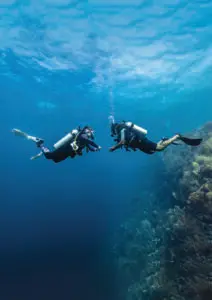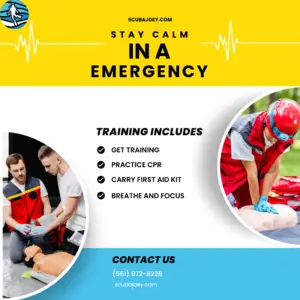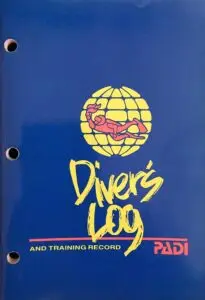Types of Scuba Diving
PADI offers training for various types of scuba diving, each catering to different interests and skill levels:
Recreational Diving: The most common form of scuba diving, typically limited to depths of 130 feet (40 meters). It includes:
- Open Water Diving: Basic scuba diving in bodies of water with direct access to the surface.
- Night Diving: Exploring underwater environments after dark.
- Wreck Diving: Investigating sunken ships, planes, or other structures.
Technical Diving: Advanced diving that goes beyond recreational limits, including:
- Deep Diving: Descending beyond 130 feet.
- Cave Diving: Exploring underwater cave systems.
- Rebreather Diving: Using closed-circuit or semi-closed circuit breathing systems.
Specialty Diving:
- Underwater Photography: Capturing the beauty of the underwater world.
- Scientific Diving: Supporting marine research and conservation efforts.
- Ice Diving: Exploring waters beneath frozen surfaces.
Scuba Diving Certification and Training
PADI offers a structured pathway for divers to progress from beginners to advanced levels:
- Open Water Diver: The entry-level certification, covering fundamental diving skills and theory.
- Advanced Open Water Diver: Builds on the Open Water certification, introducing divers to different diving specialties.
- Rescue Diver: Focuses on preventing and managing dive emergencies.
- Master Scuba Diver: The highest non-professional certification, recognizing experience and skill across multiple specialties.
Professional Levels:
- Divemaster: The first professional level, assisting instructors and guiding certified divers.
- Instructor: Qualified to teach and certify new divers.
Each level involves a combination of knowledge development, confined water skills practice, and open water dives, ensuring divers are thoroughly prepared for their underwater adventures.
Safety Measures and Best Practices
Safety is paramount in scuba diving. PADI emphasizes the following safety measures:
Pre-Dive Planning:
- Check equipment thoroughly before each dive.
- Plan dive profiles, including maximum depth and bottom time.
- Review emergency procedures and hand signals with dive buddies.
- The Buddy System: Always dive with a partner for mutual support and safety.
Conservative Diving:
- Stay within no-decompression limits.
- Ascend slowly (30 feet/9 meters per minute maximum).
- Perform safety stops at 15-20 feet (4.5-6 meters) for 3-5 minutes.
Emergency Preparedness:
- Carry a surface marker buoy and audible signaling device.
- Know how to use emergency oxygen and first aid equipment.
- Regular Skills Practice: Maintain proficiency in essential skills like mask clearing and alternate air source use.
Conclusion
Scuba diving opens up a whole new world beneath the waves. From understanding what SCUBA stands for – Self-Contained Underwater Breathing Apparatus – to mastering the skills needed to explore safely, the journey of a scuba diver is one of continuous learning and wonder.
As we’ve explored in this article, scuba diving is more than just a recreational activity. It’s a gateway to understanding our planet’s marine ecosystems, a tool for scientific discovery, and a means of connecting with nature on a profound level. Whether you’re drawn to the colorful coral reefs of tropical waters or the mysterious depths of the open ocean, scuba diving offers an unparalleled adventure.
Remember, the key to enjoyable and safe diving lies in proper training, respect for the environment, and a commitment to ongoing education. By following PADI standards and best practices, divers can ensure they’re well-prepared for the challenges and rewards that come with exploring the underwater world.
So, the next time someone asks you, “What does SCUBA stand for?”, you’ll not only have the answer but a wealth of knowledge about the fascinating world of scuba diving. Whether you’re a seasoned diver or just starting your underwater journey, the ocean’s wonders await. Dive in, explore responsibly, and discover the magic that lies beneath the surface.







